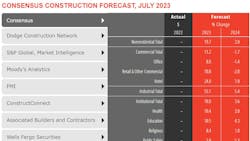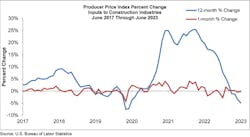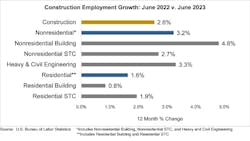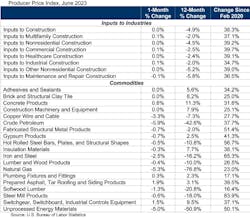"Reports of my death have been greatly exaggerated."
As legend has it, Mark Twain reportedly issued that memorable clarification in 1897 after rumors of his earthly demise had circulated widely. Properly attributed or not, it would seem that those words apply equally well to the still-vital U.S. economy in the summer of 2023.
Despite persistent predictions of a post-pandemic recession dating back to last summer, back-to-back quarters of GDP decline, and 15 straight months of Federal Reserve interest rate hikes targeting high inflation, the economy is still quite healthy. And the latest numbers on both unemployment and inflation in July are evidence of extraordinary resilience in the face of multiple epic global challenges.
"This time, the optimists were right," wrote Nobel Prize-winning economist Paul Krugman on July 14. "If you were saying that we’d need years of high unemployment to tame inflation, the fact that inflation has come way down without any rise in unemployment means that you got it really, really wrong."
Added Moody's Analytics chief economist Mark Zandi, "The deep pessimism about the U.S. economy’s prospects appears to be giving way to a more hopeful outlook."
Indeed, the latest industry employment numbers still point to worker shortages, indicating that the supply of qualified labor, itself, appears to be the biggest impediment to hiring at this moment.
“The construction unemployment rate inched up to 3.6% in June, but that’s still the second-lowest rate on record," notes Anirban Basu, chief economist for Associated Builders and Contractors. "Across all industries, unemployment remains near a 50-year low.”
Meanwhile, inflation and supply chain issues have moderated considerably.
“The pandemic-induced period of rapid construction input cost increases is over,” proclaimed Basu on July 13. “Today’s Producer Price Index data, along with yesterday’s Consumer Price Index release, show that inflation has slowed, at least with regard to goods prices. This recent moderation is partially due to a drastic improvement in supply chains; both international and domestic freight rates have plunged back toward pre-pandemic levels."
And, of course, all this has happened during the Fed's historic, sustained battle to quell inflation. Many had feared that its monthly rate hikes would bring on recession. In normal times, they probably would have. But the worldwide pandemic thrust all of us into abnormal times that are still far from over. Even if, as expected, the Fed resumes its rate hikes in July after pausing them in June, the pervasive fear of imminent recession has all but evaporated.
Consensus Forecast Still Healthy
That widespread optimism is evident in the latest economic data compiled by the American Institute of Architects (AIA) and released July 17. The report averages the latest, mid-year market predictions from nine different forecasting agencies focused on design and construction. They include forecasts from Dodge Construction Network, FMI Corp., Moody's Analytics, S&P Global, and Wells Fargo Securities.
“The AIA Consensus Construction Forecast for nonresidential construction activity remains healthy through the second half of 2023 and into 2024,” said AIA Chief Economist Kermit Baker, PhD, Hon. AIA. “The industry got off to an extremely strong start in the first half of the year, and that momentum will ensure healthy gains for the year before moving to a much more moderate pace of expansion in 2024.”
Even as this spring's "torrid pace" moderates during the second half of the year, the consensus panel projects that spending will still increase by nearly 20% for the year. "That pace of growth hasn’t been seen since the construction boom years leading up to the Great Recession," noted Baker.
Looking at the balance of the year, the group forecast predicts continued strength in several nonresidential categories before spending contracts more markedly next year.
"Leading the charge is the manufacturing sector, where spending is projected to increase more than 50% this year on top of an exceptional performance last year," added Baker. "And while industrial construction spending is expected to be the bright light, healthy gains are expected across the board, with both the commercial and institutional construction categories projected to increase at a double-digit pace."
##########
About the Author
Rob McManamy
Editor in Chief
An industry reporter and editor since 1987, McManamy joined HPAC Engineering in September 2017, after three years with BuiltWorlds.com, a Chicago-based media startup focused on tech innovation in the built environment. He has been covering design and construction issues for more than 30 years, having started at Engineering News-Record (ENR) in New York, before becoming its Midwest Bureau Chief in 1990. In 1998, McManamy was named Editor-in-Chief of Design-Build magazine, where he served for four years. He subsequently worked as an editor and freelance writer for Building Design + Construction and Public Works magazines.
A native of Bronx, NY, he is a graduate of both the University of Virginia, and The John Marshall Law School in Chicago.
Contact him at [email protected].



